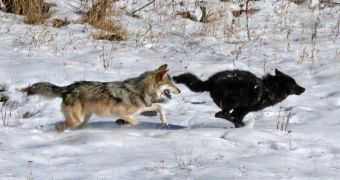A study partially funded by the US National Science Foundation (NSF), and published in the December 2 issue of the top journal Science, shows that predictions of how wolves in Yellowstone National Park will react to climate change can be considerably improved.
In order to do that, the research team carried out an in-depth investigation of the creatures themselves. Wolves went extinct from the park decades ago, but they were recently reintroduced, and researchers are very curious about how they are doing.
The Yellowstone Wolf Project is in charge with everything that has to do with the well-being of the wolves in the part. Primarily, the top predators were reintroduced in order to keep elk populations from spiraling out of control.
The elks – while harmless in themselves – place great strain on the environment, by consuming many resources. They were also destroying a number of trees, by trying to sharpen their horns on their bark.
Between 1998 and 2009, researchers kept an eye on how the predators adapted to their environment. It was found that a number of the traits the team was analyzing were determined by natural selection and evolution. Coat color is such a factor, the experts say.
Still, factors such as population size were influenced by ecology and by other characteristics in the habitat itself. The team then put together a “map” of conditions in the park, in relation to the wolves. Years were cataloged as either good or bad for the predators' survival.
“The novelty of the new model is that it looks at how the frequencies of changes in environmental conditions along the 'good to bad' year continuum simultaneously impact many wolf characteristics,” explains Imperial College London expert Tim Coulson, the lead author of the Science paper.
Scientists with the research team hope that the guidelines they derived from studying Yellowstone wolves could be used to analyze the behavior of other species, such as insects or crop pests. This could contribute to increasing the efficiency of agriculture, for example.
However, at this point, there is no way of saying for sure whether the research methods will be applicable to other types of habitats. The wolves were largely confined to a particular area, whereas crop pests, for instance, move about freely, spreading through ecosystems.
Experts from the University of Minnesota in St Paul, the National Park Service, the University of California in Irvine, and the University of California in Los Angeles were also a part of this investigation.

 14 DAY TRIAL //
14 DAY TRIAL //